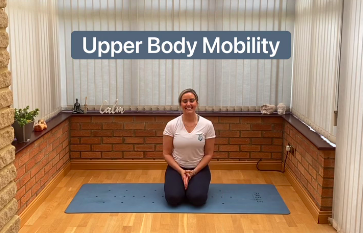Please watch this video and then pop to find the skill on top of your list to work on or repeat a flow from this week.
Mobility challenge. Week 1. Core & Breath work class 2.
Progressing from day 1 core. Again, I cue a lot – please limit distractions and focus on the task at hand.
Mobility challenge. Week 1. Upper body flow 1.
Move slow, move intentionally, listen to your body. I love this one! x
Mobility challenge. Week 1. Core & Breath work 1.
I understand that many of you will feel more advanced than this core class today, but I would like everyone to please start here! I talk and cue A LOT. I am really teaching the basics of how to keep that core area aligned, & engaged, whilst still enabling you to breathe optimally – super important to learn.
Mobility challenge. Week 1. Lower body flow 1.
A combo of passive and dynamic moves to open up into the lower body. Take notes during and afterwards. Remember to breathe deeply into those areas you feel tension. Enjoy.
Mobility challenge. Week 1. Full body flow 1.
This is your challenge so please listen to your own body. Move slow – fast is not better. Remember to breathe and enjoy.
Assessment 5. Shoulder flexion.
Strong mobile shoulders = improved posture! The importance of shoulder and upper back mobility cannot be underestimated. A lot in our lifestyle can mean we are often sat with forward rounded shoulders, hunched backs and what I like to call “text neck”. From using our devices more to school work and driving – it all can affect our posture. Let’s assess this simple movement and improve our posture overtime.
Assessment 4. Thoracic spine mobility.
The Thoracic spine (mid/upper back) mobility is very important for achieving good posture. With working on our thoracic mobility we can improve our posture, body language and promote better breathing patterns.
Assessment 3. 90/90 hip mobility.
Holding tightness and tension in the hips is a common complaint for dancers.. It’s easy to understand why with all of our movement coming from this area. Any tightness around the hips and we restrict our range of motion – from sharp cuts to clicks and turnout & crossing. Hip mobility is something that needs consistent work and attention for the dancing athlete. For now let’s assess how we look and feel executing the 90/90 hip mobility drill.
Assessment 2. Ankle dorsi flexion.
Ankle mobility is vital during everyday movements – walking, going up & down stairs. But for dancers it’s essential to lower the risk of injury, for better movement in your ankles for footwork patterns and optimal stability – more stability = improved power! Let’s assess where we are at today.










